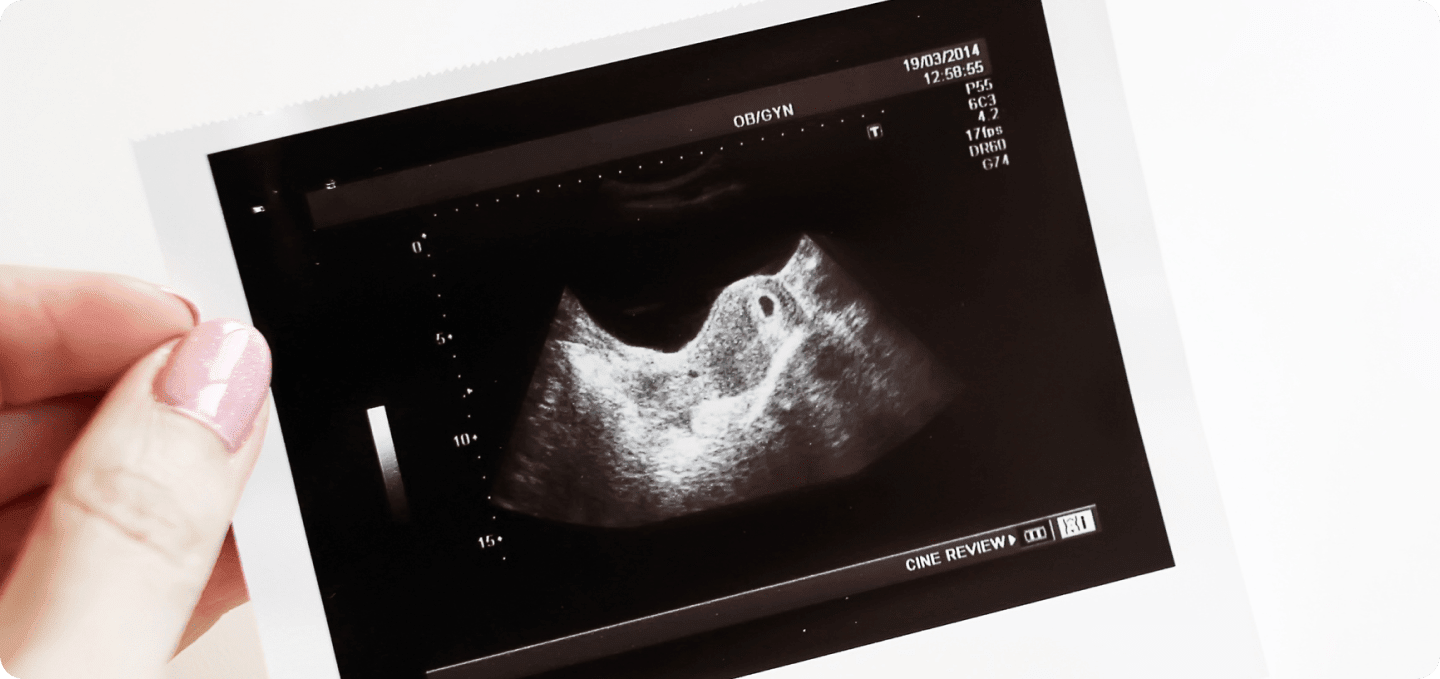Learn all about implantation — timing, symptoms, and factors that can help or hinder this crucial early stage of pregnancy.
Key Facts About Implantation
- Implantation is the process where the fertilized egg attaches to the uterine wall.
- Implantation occurs between 5 and 12 days after ovulation.
- A pregnancy test is reliable starting from the first day of a missed period, when enough hCG is present in the urine.
- Up to 25% of women experience light spotting or implantation bleeding.
- If you are trying to conceive, you should start taking folic acid early and maintain a healthy diet and exercise routine.
When Does Implantation Occur and What Influences the Process?
If you’re trying to conceive, understanding this key moment can make all the difference. The implantation of the fertilized egg into the uterine lining is a crucial step for a pregnancy to begin. Let’s take a closer look at the time of implantation and the conditions needed for it to happen.
In this guide, you’ll learn everything about implantation — from the conditions required and the exact timing, to early signs such as slight vaginal bleeding, and the factors that may prevent it. We’ll also explain how soon you can take a pregnancy test, what early pregnancy symptoms to watch for, and what to do if implantation doesn’t happen as planned.
When Does Implantation Happen?
The egg implants typically between 5 and 12 days after ovulation, most often between days 8 and 10. The exact timing depends on when you ovulated and whether conception happened early or late in your fertile window.
When can I see implantation on an ultrasound
Usually, nothing is visible on ultrasound until the 5th or 6th week of pregnancy. By then, you’ll likely be able to see a gestational sac and, with a bit of luck, the first signs of embryonic development. By the 7th or 8th week, the heartbeat can usually be detected, confirming the pregnancy.

What Is Implantation?
Implantation marks an early stage of conception in which the blastocyst — the rapidly dividing cell cluster formed after fertilization — attaches to the uterine wall. This step requires many coordinated processes in the woman’s body before embryo implantation can succeed.
How Does Implantation Work?
- Fertilization: When a mature egg is released from the ovary, it travels into the fallopian tube. If intercourse happens during the fertile days, sperm can meet the egg here, resulting in fertilization.
- Cell Division: After sperm and egg merge, the zygote begins dividing and travels through the fallopian tube into the uterus. By now, it’s called a blastocyst.
- Implantation: Once in the uterus, the blastocyst must attach to the uterine wall. This triggers hormonal changes, including rises in estrogen, progesterone, and human chorionic gonadotropin — the pregnancy hormone.
- Progesterone Production: If implantation happens, progesterone helps develop the placenta and embryo, maintaining the pregnancy.
Signs and Symptoms of Implantation
You may wonder whether you can feel implantation or have heard of implantation bleeding. Symptoms of implantation vary widely: some women notice early signs of pregnancy like nausea or tender breasts, while others feel nothing.
Possible implantation symptoms (not definitive indicators) include:
- Light bleeding or spotting (often called implantation bleeding)
- Mild cramps or a pulling sensation in the lower abdomen
- Discomfort in the lower back
- Increased cervical mucus or vaginal discharge
- Bloating
- Tender breasts
- Nausea / morning sickness
- Mood swings
- A temporary drop in basal body temperature (known as an implantation dip)
Implantation Bleeding
Up to 25% of women experience bleeding or spotting during the first trimester, sometimes linked to implantation. This light spotting can be mistaken for a menstrual cycle starting, but it is usually lighter in color (pink or brown) and shorter in duration — often lasting just a few hours to three days.
Cramping and Discomfort
When implantation occurs, hormonal surges can cause mild cramps or tension in the pelvis. Some women describe this as implantation cramps or a dull ache in the lower back.
Changes in Cervical Mucus
During ovulation, cervical mucus is clear, stretchy, and egg white–like. After implantation, it often becomes thicker and white due to rising progesterone and estrogen.
Bloating
In early pregnancy, increased progesterone slows digestion, leading to bloating that may be mistaken for a baby bump.
Tender Breasts
Rising hCG levels (human chorionic gonadotropin) and sex hormones can make breasts feel heavy and sensitive. However, this can also happen before a menstrual period.
Morning Sickness
Early pregnancy symptoms often include nausea, sometimes starting as early as the 4th or 5th week, around the missed period. Elevated hCG levels and heightened smell sensitivity may worsen this symptom.
Metallic Taste and Mood Swings
Hormonal changes can cause a metallic taste in the mouth and mood swings ranging from euphoria to irritability.
Implantation Dip
Normally, your temperature is lower before ovulation, rises to about 37 °C during ovulation, and then falls again before your menstrual period begins. If you are pregnant, your temperature generally stays elevated.
However, in some women, the temperature appears to dip slightly around the time of implantation. On a chart, this shows up as a small drop — an implantation dip — followed by a gradual rise again (whereas before a period, it would keep dropping). It’s thought that this may be due to a surge in estrogen, although the exact reason isn’t fully understood.
What Can Prevent Implantation?
There are two main factors than can interfere with implantation:
- Uterine lining: In about two-thirds of cases, implantation can be disrupted by an inadequately developed uterine lining — for example, due to progesterone deficiency — as well as by polyps or fibroids in the lining of the uterus, or structural abnormalities of the uterus such as a septum.
- Genetic abnormalities: The remaining one-third of cases are related to the embryo itself. The most common cause is a genetic abnormality, either inherited from the mother or father, or caused by a random genetic error during fertilization. Another possible reason is that the egg was not healthy.
The Implantation Window
Within the menstrual cycle, there’s a specific time of implantation window when the lining of the uterus is most receptive. A shifted window can cause implantation failure. An ERA test (Endometrial Receptivity Analysis) can pinpoint this window, guiding IVF timing and treatment.
Supporting Implantation
You can’t actively force implantation, but you can improve overall conditions: take folic acid, eat well, and stay active. Your ob-gyn can advise if you’ve experienced pregnancy loss, an ectopic pregnancy or have infertility concerns.
Final Takeaway: Many Factors Influence Successful Implantation
After fertilization, the zygote must travel through the fallopian tube, become a blastocyst, and implant into the lining of your uterus. Only then can early pregnancy progress. If you suspect pregnancy, a pregnancy test from the first day of a missed period is your best first step.
If you’ve been trying to conceive without success or have experienced repeated pregnancy loss, our fertility clinic in Zurich is here to help — with compassionate, individualized care from our expert women’s health team.
FAQ on Implantation
When Can I Take a Pregnancy Test?
A home pregnancy test can be taken from the first day of your missed period. That’s when enough hCG levels are usually present for detection. Sometimes it takes longer for the body to produce detectable hCG.
A blood test at your ob-gyn’s office provides the most accurate result.
Can Implantation Be Seen Before a Positive Pregnancy Test?
No — at this stage, the embryo measures only 0.1–0.2 mm, far too small for ultrasound. As the American College of Obstetricians and Gynecologists (ACOG) explains, confirmation before a positive pregnancy test isn’t possible.







